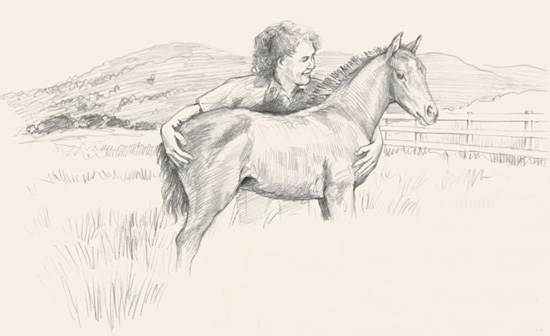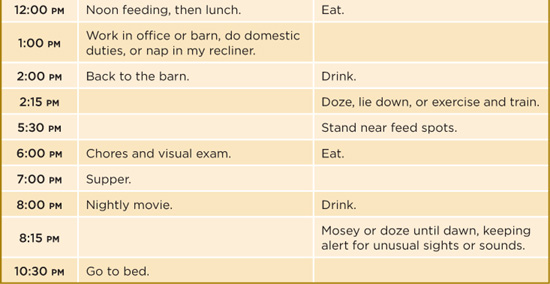

Shedding horses, green grass, the return of the meadowlarks … spring is here! When I go to bed each night, I am often rehearsing all the things I want to do the next day as I slip into dreamland, and when my feet hit the floor every morning, they are in high gear. This is the beginning of a new horse season, and it can’t start too early for me.
Mother Nature, however, can bring some interesting events to the mix. We usually have our deepest and wettest snowstorms during March, April, and even May. So although I am revved, I always need a backup plan in place if the weather makes it unsafe or impossible to train or ride.
The horses are all brought in from winter pastures in March, if not before, to allow the land to rest and the plants to grow. Each horse has his own separate sheltered pen. I bring the horses back into work one at a time, starting with a grooming program. I might vigorously groom a horse daily to remove as much of the shedding hair as possible, or in some cases, I might bathe a horse in early March and give him a body clip. (See more about body clips in December.)
Until a horse is 95 percent shed out, I don’t put a sheet on him. Then I either give him a turnout sheet or a fly sheet, depending on the weather, to protect his coat.
The horses are still on a 100 percent hay ration, but I cut back a bit to help them start losing their winter fat and hay belly if they have one. Because they are in pens, they require exercise, so I review in-hand and longeing to get them into work mode. I pay attention to each horse’s specific needs for conditioning and adjust rations as needed.
Horses in training are kept shod, and even some that are not in training are kept shod to protect their hooves from our abrasive Rocky Mountain terrain. It is great having a resident farrier!
This time of year, the horses are fed three times per day, at 6:00 a.m., noon, and 7:00 p.m. The seniors are still getting their beet pulp and supplements, and the rest of the horses receive beet pulp with additives as their level of work dictates.

Spring makes us all feel great. I’m spending lots of time outdoors. I always wear a broad-brimmed hat, a bandanna around my neck, gloves, and a long-sleeved shirt. This is mainly to protect my eyes and skin from sun damage. I often find that from this time of year through fall, I get plenty of varied exercise from chores, grooming, training, riding, mowing, and facilities maintenances tasks, so the indoor exercise equipment gets a little dusty over the summer. The early mornings and late afternoons can still be a bit chilly, so mainly for my horse’s sake, I try to do vigorous training and riding either midmorning or midafternoon, giving them plenty of time to cool out thoroughly before chilly evening temperatures.
Spring Visual Exam
OVERALL STANCE AND ATTITUDE. As I approach the barn, does the horse have his head up, are his eyes bright, and is he eager for feed or is he lethargic, inattentive, or anxious?
LEGS. I look at the horse from both sides so I will quickly spot any wounds, swelling, or puffiness.
APPETITE. Has the horse finished all of his feed from the previous feeding?
WATER. Is there evidence that he has taken in a sufficient amount of water?
MANURE. Is the fecal material well formed or is it hard and dry, loose and sloppy, covered with mucus or parasites, or filled with whole grains? Are there at least three to four manure piles since I last fed? (Six to eight bowel movements per 24-hour day is normal.)
PEN, SHELTER, OR STALL. Are there signs of pawing, rubbing, rolling, thrashing, or wood-chewing?
